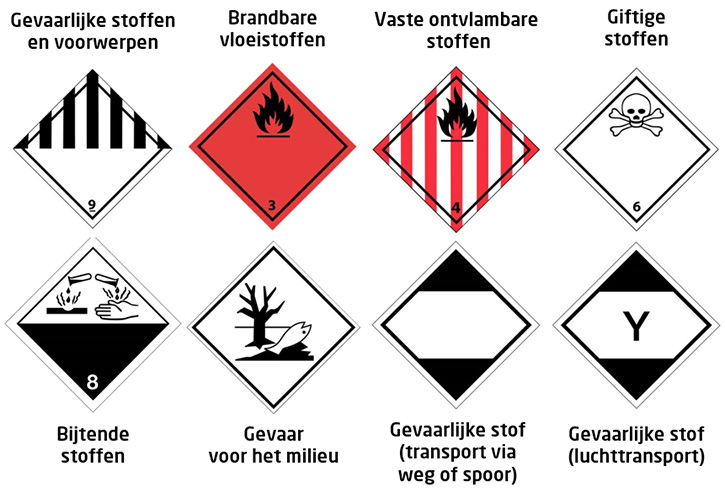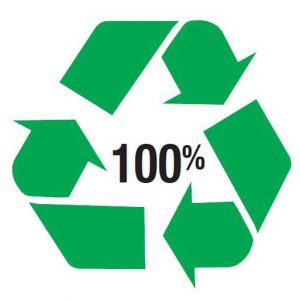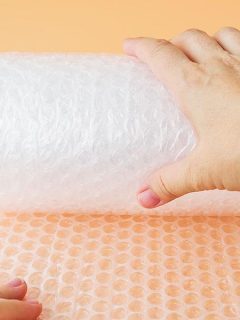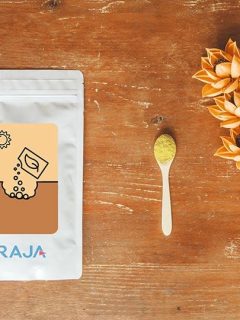Handling pictograms and symbols on packaging: no doubt you have already seen them on boxes, bags and tapes. Some may be self-explanatory but for the meaning of others you may still be scratching your hair? So time for our packaging specialists to change that. Below, we put the most commonly used universal symbols under the magnifying glass one by one.
Guide to symbols on packaging
► Environment and Recycling
This is undoubtedly one of the most common symbols on packaging. The figure indicates the percentage of recycled material in the final product. The logo was designed in the late 1970s by American Gary Anderson. It has since been used worldwide as a symbol of recycling.
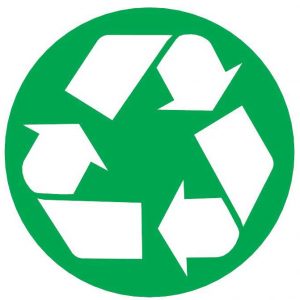
To know whether you are dealing with a fully recyclable product, you have to look out for this symbol. This is the case, for example, with many products made of paper, cardboard, etc.
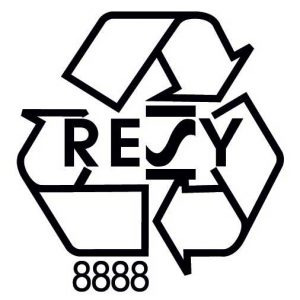
You often see the RESY symbol popping up on products in and from Germany. It guarantees the recycling of paper and cardboard. The number below the arrows indicates the company’s master number. For RAJA, this is simply 8888.
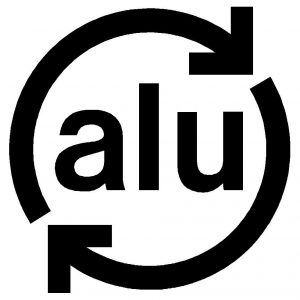 .
.
This symbol confirms the presence of recyclable aluminium in the product.
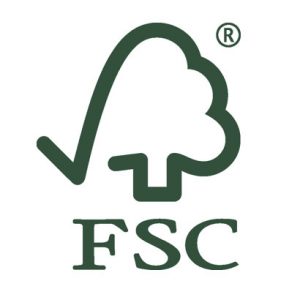
The Forest Stewardship Council or FSC is an organisation that ensures that forests worldwide are managed responsibly. Paper and wood with this logo therefore meet FSC standards.
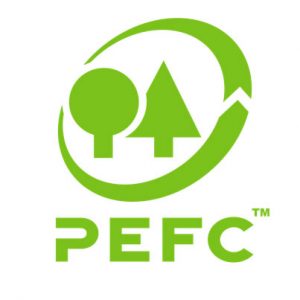
This certification guarantees that the product you buy comes from responsible raw materials and that by your purchase you are contributing to the conservation of forests worldwide.
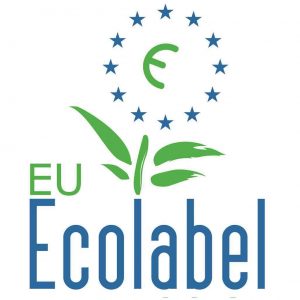
The EU Ecolabel is a label awarded by the EU to products that are better for the environment without sacrificing quality. Due to the very strict requirements, only 10% to 20% of products on the European market can carry this label.
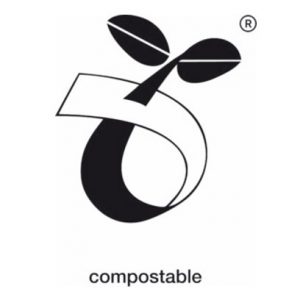
This label is managed by European Bioplastics, the umbrella organisation of producers of organic plastics. These products or raw materials are compostable under industrial conditions. People often combine it with the OK Compost label.
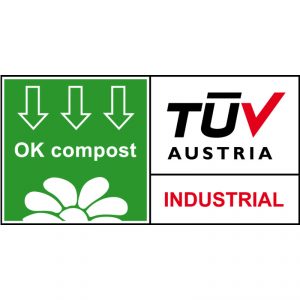 .
.
This OK Compost label certifies that a product is 90% biodegradable within six months under industrial composting conditions.
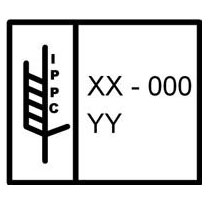
This symbol refers to the ISPM15 standard. That stands for the International Standard for Phytosanitary Measures. This standard stipulates that both pallet wood and packaging wood should be decontaminated by high temperatures. This is to prevent the spread of harmful organisms from one continent to another.
Read more: what makes packaging materials sustainable? ]► Raw materials
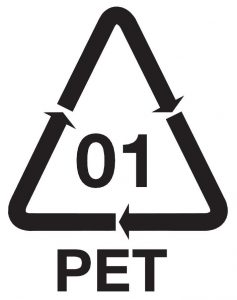
PET stands for polyethylene terephthalate. This raw material is mainly used to make transparent plastic bottles, for example. The arrows around the symbol indicate that this raw material is recyclable. This also applies to the following raw materials in this list.
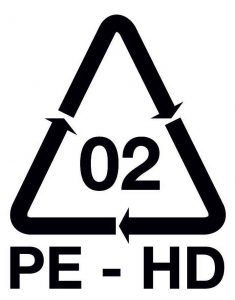
Thissymbol refers to high-density polyethylene. This rigid material is very strong, water-repellent and opaque (comparable to milk glass). It is mainly used to make rubbish bags, sturdy plastic bags and water bottles that can take a beating.
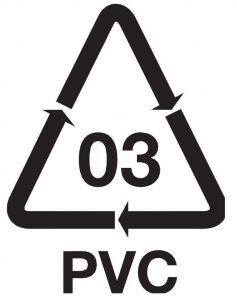
The next raw material in our list is polyvinyl chloride or PVC. It is a stable plastic that is hard-wearing and lightweight. It lasts a very long time and can be reused after recycling. Its applications include tape.
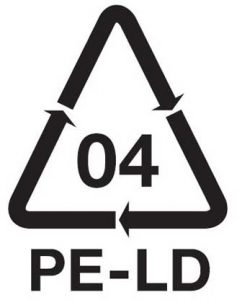
PE-LD stands for low-density polyethylene. This material is fairly soft and tough and made from petroleum. Like its sturdier sibling PE-HD, it is therefore easily recyclable. This plastic easily withstands temperatures up to +80 °C and is also water-repellent. Most air cushion bags as well as grip bags are made of this soft material.
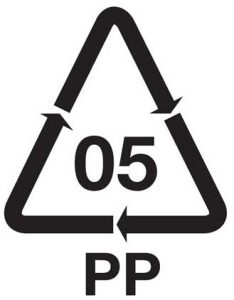
PP stands for polypropylene, or polypropylene as you often see these days. Polypropylene has a much higher resistance than polyethylene and is therefore one of the most widely used plastics. Polypropylene hardly deforms, is very strong, corrosion resistant, colourfast, heat resistant and chemical resistant.
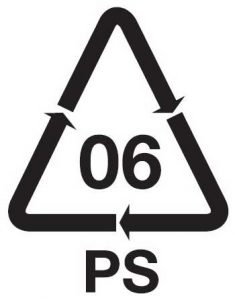
Polystyrene or PS is a type of Styrofoam with insulating properties. This plastic is water-resistant and is also easy to recycle. Due to its great strength, it lasts for years.
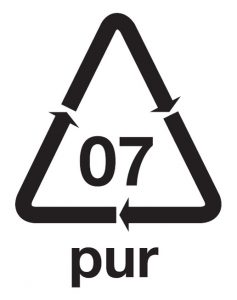
Polyurethane or PUR is a type of rigid foam. It is CFC-free and therefore also environmentally friendly. It is often found in the construction industry but also in the packaging world in the form of buffer cushions (such as those made by Sealed Air®).
For more info on plastic recycling, see here ]► Quality and shipping labels
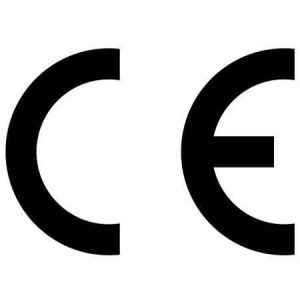
CE stands for Conformité Européenne and is awarded to products that comply with applicable rules within the European Economic Area (this is the EU plus Switzerland, Liechtenstein, Norway and Iceland).
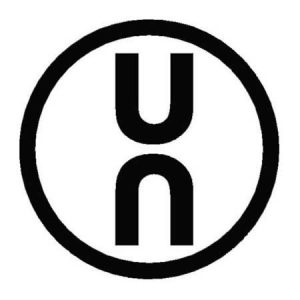
Products with this label must meet strict requirements and tests as set out by the UN. You can see this unique UNO symbol appearing on certain plastic bags, jerry cans, etc., among other things.

You will see this symbol for packaging on products with anti-static properties. This type of packaging retains little static electricity and is hardly conductive. A must therefore when shipping electronic equipment.
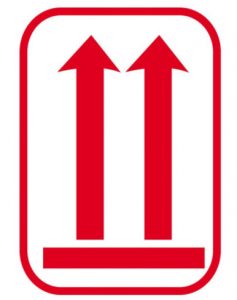
This is one of the symbols on packaging to indicate which side of the box should face up. People often combine this logo with the text ‘This side up’. The variant with black arrows is usually mandatory when transporting liquids.
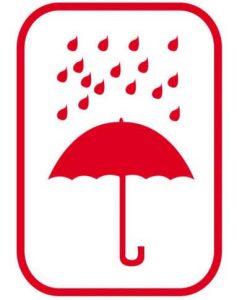
.
Do you see this symbol? Then it means that the contents of the package are susceptible to moisture. So beware of rain and water!

.
This label makes it clear that no cargo should be placed on top of your boxes. This comes in handy when you ship very fragile products, among other things.
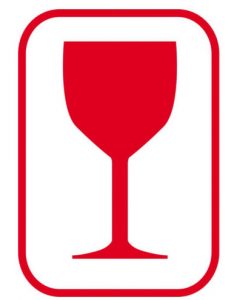
.
To make it clear that your goods are fragile or very vulnerable, it is best to use this packaging symbol. Below the glass, you will often still see the text ‘fragile’ or ‘ breakable’.
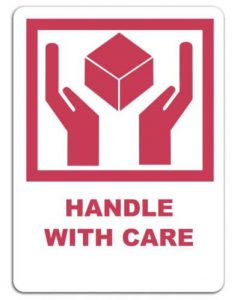
.
When you see this label on a package, you are dealing with a fragile or vulnerable product. So handle it with care!
► Transport of hazardous products
The following series of symbols on packaging require extra attention. They indicate that the packaging contains hazardous products. Providing protective clothing and safety gloves is therefore not an unnecessary luxury. Check below which hazardous products you may be dealing with, among others:
